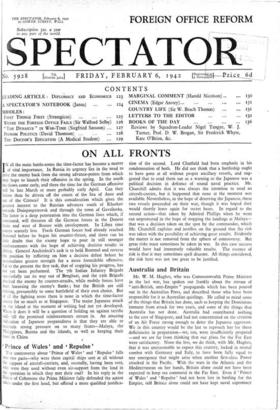Prince of Wales' and Repulse
The controversy about `Prince of Wales' and 'Repulse ' falls Into two parts—why were these capital ships sent at all without the support of aircraft-carriers, and, secondly, having been sent, Why were they used without even air-support from the land in the operation in which they met their end? In his reply in the House of Colnmons the Prime Minister fully defended the aotion taken under the first head, but offered a more qualified justifica-
tion of the second. Lord Chatfield had been emphatic in his condemnation of both. He did not think that a battleship ought to have gone at all without proper ancillary vessels, and sug- gested that to send them out as a warning to the Japanese was a political decision in defiance of sound naval practice. Mr. Churchill admits that it was always the intention to send an aircraft-carrier, but it happened that none at the moment was available. Nevertheless, in the hope of deterring the Japanese, these two vessels proceeded on their way, though it was hoped they would shortly leave again for secret bases. In regard to the second action—that taken by Admiral. Phillips when he went out unprotected in the hope of stopping the landings at Malaya— that was a decision taken on the spot by the commander, which Mr. Churchill explains and justifies on the ground that the risk was taken with the possibility of achieving great results. Evidently the matter is not removed from the sphere of controversy. But great risks must sometimes be taken in war. In this case success would have had immensely valuable results. The essence of risk is that it may sometimes spell disaster. All things considered, the risk here was not too great to be justified.


























